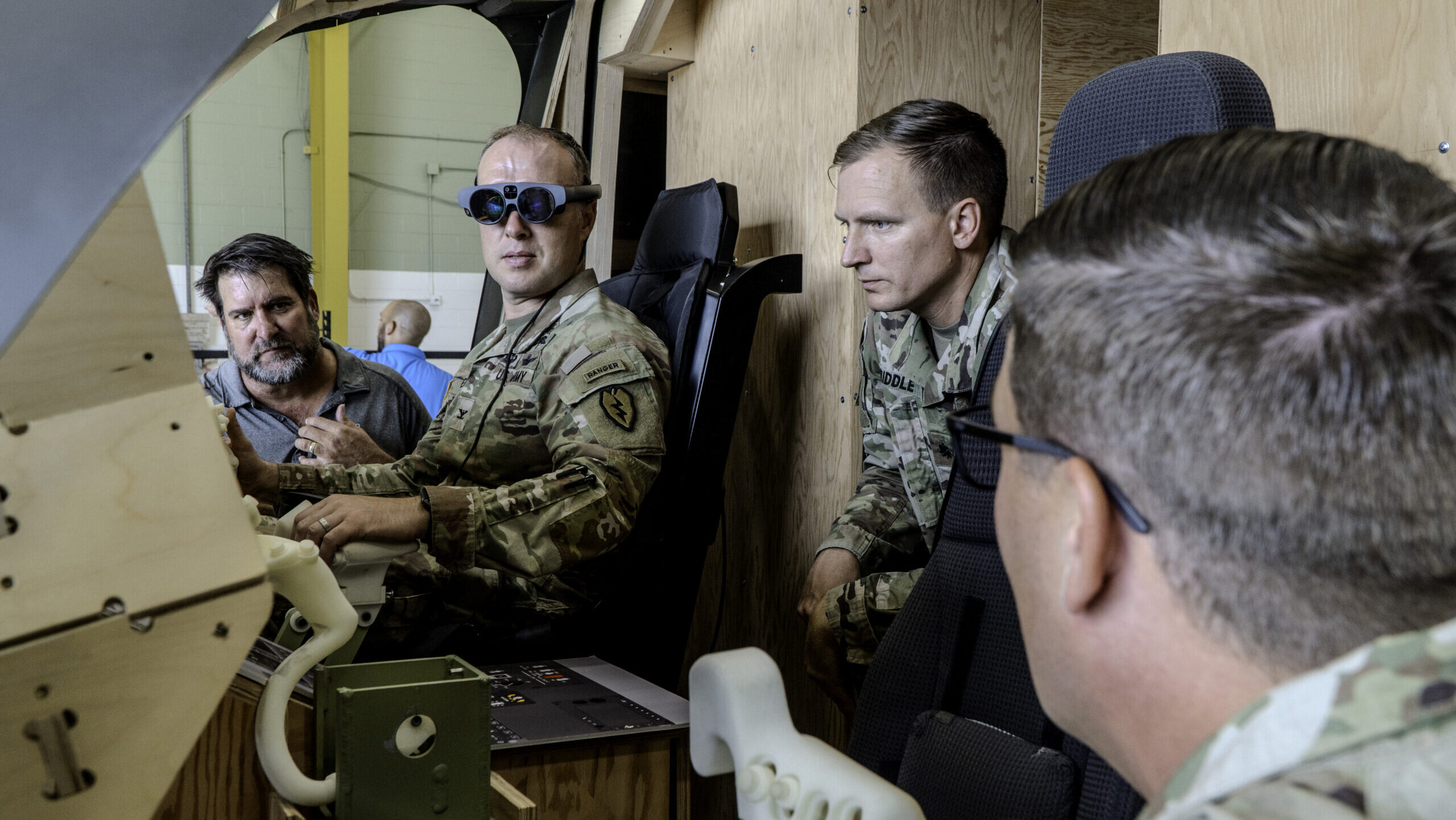Turkey’s ASELSAN shows off its wares during the Farnborough International Airshow 2024 at Farnborough International Exhibition and Conference Centre on July 23, 2024 in Farnborough, England. (Photo by John Keeble/Getty Images)
BEIRUT — As Middle East countries are struggling to boost their air and missile defense capabilities amid widening regional conflicts, Turkey announced today that it’s building its own high-tech layered defense system, dubbed Steel Dome (Çelik Kubbe in Turkish), to compete with Israel’s Iron Dome.
The “security umbrella” of Steel Dome is a network-centric air defense system equipped with artificial intelligence features and is expected to protect Turkey’s entire airspace from “very low altitude to very high altitude” and “very short range to long range” threats, according to a statement issued by the government’s Presidency of Defense Industries (SSB).
The Steel Dome is being developed by Turkish firms Aselsan, Roketsan, SAGE and Mechanical and Chemical Industry Corporation (MKE), and coordinated by Presidency of Defense Industries, according to Aselsan CEO Ahmet Akyol.
“The Steel Dome, which we can call a ‘system of systems,’ will eliminate all kinds of threats in our airspace at all altitudes and ranges. It will add strength to our heroic Armed Forces,” Akyol wrote Wednesday on X.
👨💻Adım adım geliştirdiğimiz teknolojilerle oluşturduğumuz ‘Çelik Kubbe’ konseptimiz, devletimizin çelik iradesini de arkasına aldı.👊
.
🚀’Sistemler sistemi’ diyebileceğimiz Çelik Kubbe, tüm irtifa ve menzillerde, hava sahamızdaki her türlü tehdidi bertaraf edecek. Kahraman… pic.twitter.com/wsIv5bOelU
— Ahmet Akyol (@Ahmet_AKYOL82) August 7, 2024
Israel’s famed Iron Dome is actually just one of three layers of air defenses; the others being the Arrow high-altitude defense system and the medium-range David’s Sling. Turkish defense expert Can Kasapoglu, told Breaking Defense that the Steel Dome is a layered architecture of air and missile defense augmented by electronic warfare systems.
“It is an all-sensors best-shooter type of holistic defensive architecture,” said Kasapoglu, a senior fellow at the Hudson Institute, “not one single weapon system.”
Kasapoglu added that the development of this layered missile defense comes “in light of the rise of mixed strike packages consisting of drones and all kinds of missiles. The Russo-Ukrainian War has been an incubation source for such strike CONOPS [Concept of Operations].”
A graphic representation of the system posted by Akyol on X, shows diverse air defense systems that could be part of Steel Dome, including HiSAR, SiPER and GURZ connected through RADNET radar link management system and controlled through HAKiM Air command and control system. The graphic also suggests that the system will be linked to satellite through the locally developed T-link.
The system is also expected to counter drones with the iHTAR jammer, GOHBERK laser and ALKA jammer and laser. Aselsan did not respond to a request for additional comment by publication time.
This announcement comes as the Middle East suffers from conflicts between Iran and allies from one side and Israel from the other side, during which missile defense has proven to be an indispensable element from protecting civilians and national assets. For example, on April 13 when Iran launched a barrage of 300 missiles and drones towards Israel, though most were intercepted by US, Israeli and Jordanian air defenses and little harm was inflicted.
While Iron Dome has been operational for decades and has added counter-drone capabilities in recent conflicts, Steel Dome is just a concept of operations that has yet to be tested, verified and operational. But if these stages are completed successfully it could attract the interest of many Arab and Gulf countries seeking to protect their airspace against different threats.











